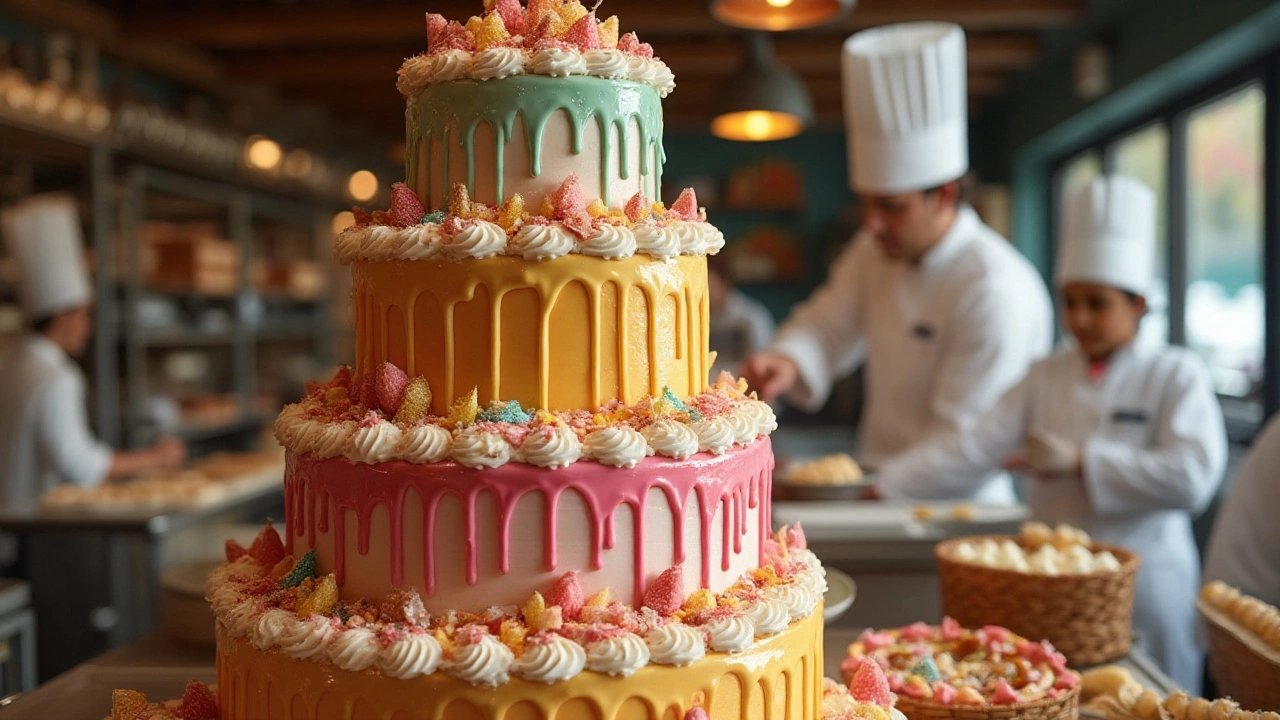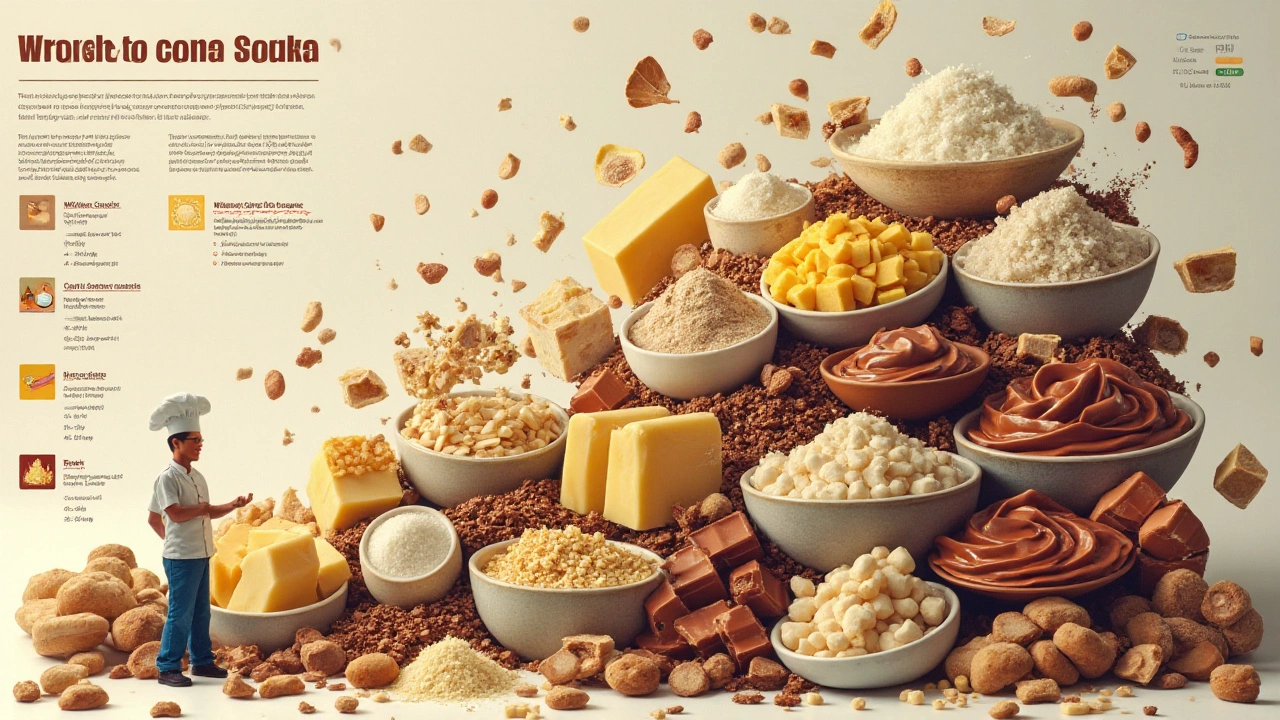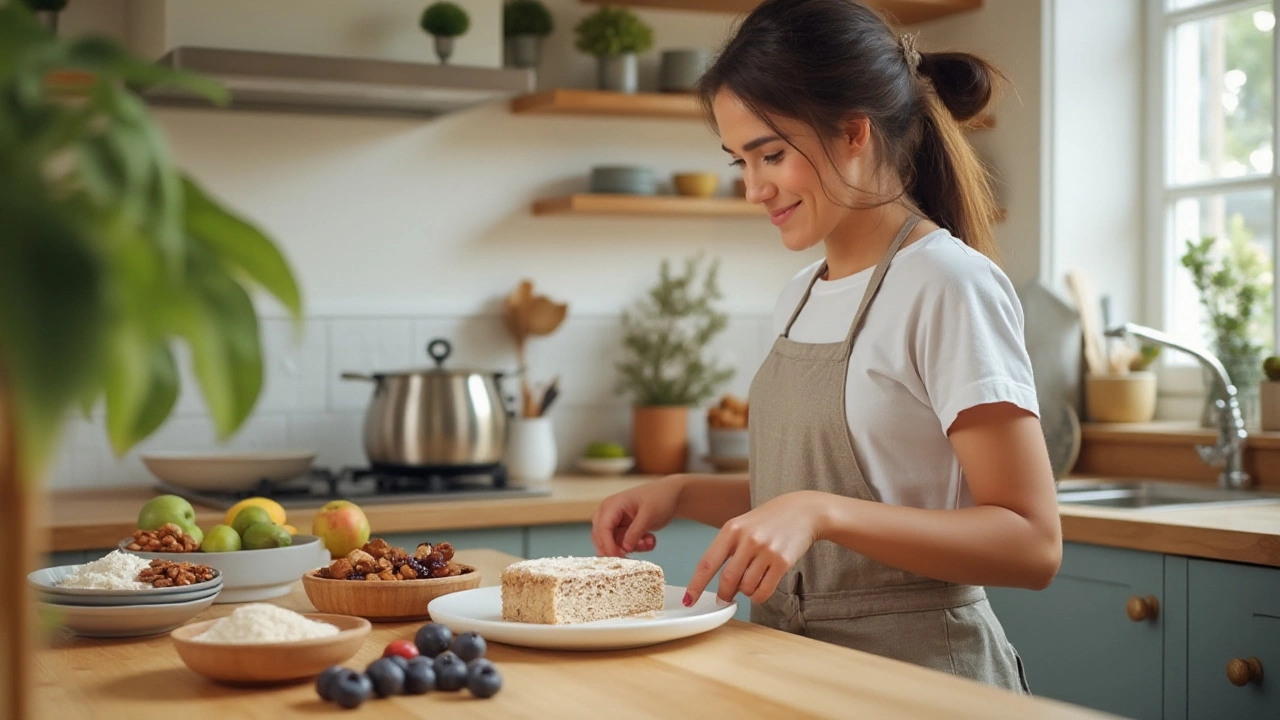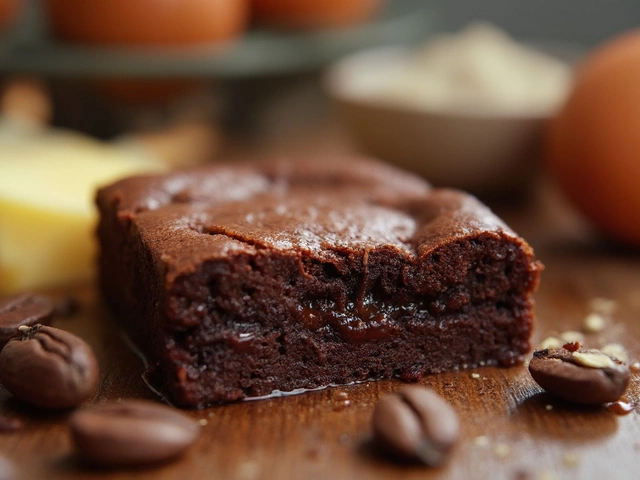
Cakes are a quintessential symbol of celebration and indulgence, yet some of these sweet creations take decadence to unprecedented heights. While everyone deserves to indulge now and then, delving into the world of the unhealthiest cakes opens up a narrative rich with surprising facts about their ingredients and impact on our bodies.
It’s fascinating how ingredients contribute not just to flavor and texture, but also to the calorie count and nutritional downsides of these treats. Let’s embark on an exploration to identify what makes a cake particularly unhealthy, revealing the legends of extravagance in cake history and the toll they take on health.
In the midst of this sugary adventure, we’ll also offer practical insights on embracing moderation and suggest tantalizing yet lighter alternatives. Join me as we slice into the most decadent cakes ever created, daring to uncover their alluring — if occasionally monstrous — appeal.
- The Quest for the Unhealthiest Cake
- Ingredients That Add Up
- Health Impacts of Decadent Cakes
- The Most Indulgent Cakes in History
- Tips for Enjoying Moderation
- Exploring Healthier Alternatives
The Quest for the Unhealthiest Cake
In our pursuit of the unhealthiest cake, we dive into the delightful yet dangerous depths of confections that cater unashamedly to our cravings. Who could resist the allure of a cake that promises decadence in every bite? But there lies a hidden intrigue: just how far can a cake go in terms of pure indulgence before it becomes a paradox of pleasure and excess? The unabashed descent into towering layers of cream, butter, and sugar marks the journey into the realm of cakes that most diets shudder at. Prolific pastry chefs have often seen the cake as a canvas, a playground for their culinary imaginations to run wild, pushing boundaries not just of flavor but nutritional recklessness. It’s fascinating how these decadent creations can both captivate and caution, leaving us teetering on the edge of culinary overindulgence.
Tracing the roots of such extravagant cakes, one stumbles upon creations like the infamous "death by chocolate" and the legendary "gâteau magique," each contributing their own version of unhealthy desserts to cake history. The latter, for example, is known for its three layers of varying textures created with a single batter, a testament to culinary creativity but also a harbinger of caloric chaos. A cake’s unhealthiness comes by the deliberate concoction of high-calorie ingredients such as copious amounts of sugar, butter, and rich dairy that define its lusciousness and simultaneously jeopardize our health.
The renowned French chef Michel Roux once mused, "A dessert is not always about calories; it is about how much enjoyment you can embrace from a single bite." A perspective that resonates deeply with cake lovers worldwide.
Many cultures have embraced the art of baking decadent cakes, each with their signature excesses. The American Carrot Cake, often deceptively perceived as healthy due to its name, boasts a rich cream cheese frosting that swings its nutritional balance to the heaviest scale. Meanwhile, Australia’s Lamingtons, small though they might be, are little calorie bombs packed with both fats and sugars from their chocolate and coconut coverings.
Perhaps what makes this quest truly captivating is not just the pursuit itself, but the recognition of why these cakes command such a cherished spot in our celebratory traditions despite their nutritional transgressions. Modern-day indulgence meets time-worn recipes passed through generations, each vying to impress with pure opulence. As we unveil these culinary beasts, a deep appreciation for moderation starts to unfold, akin to recognizing the importance of balance in our eating habits.
Dipping into sugar-crusted histories, these cakes are morsels of splendor and caution wrapped in alluring packages. They remind us of their latent charm and ever-present consequence. Ultimately, the adventure doesn’t just lie in the search for the most caloric confection but also in relishing its tale, a sweet reminder that some pleasures are best savored in little bites.
Ingredients That Add Up
When we think about what classifies a cake as the unhealthiest cake, our minds jump right to the hedonistic concoctions filled with sugary fervor and buttery indulgence. But what precisely makes these cakes so notorious? It lies in their ingredients, each element layering on calories and questioning health norms. Highly refined sugar stands out as the main culprit, serving as the sweet demon that indiscriminately boosts flavor while pushing blood sugar levels to a roller-coaster, contributing to potential long-term health issues like diabetes.
Another key player is unhealthy desserts, laden with excessive amounts of fats, often in the guise of butter or margarine. While fats improve the moisture and mouthfeel of cakes, they also pack in a high caloric punch. A startling fact is that a typical slice of a decadent chocolate cake can carry as much as 600 calories, half of which might hail from fats alone. None of these would merit any consequence unless consumed in moderation, yet cakes tempt us beyond sensible portions.
The next ingredient adding to the unhealthiness factor is refined flour. Often stripped of its natural nutrients, bleached white flour offers little in way of dietary benefits while acting as another supporter of those rising sugar lows and highs. In unhealthy desserts, these ingredients combine like a blockbuster team, diverting us from nutritional balance.
"A mixture of abundant fat, sugar, and refined flour is what sets triple-layered cakes apart as diet saboteurs," notes nutrition expert Dr. Emily Frost.
Decorative elements like cream cheese frosting and thick chocolate ganache, irresistible as they are, contribute extra layers of fat as well as calories. A notorious recipe, the ‘Death by Chocolate’ cake, can have over twenty teaspoons of sugar per serving, exemplifying the peak of dessert decadence. Understanding these components helps us align our inner dessert compass with health-conscious choices without necessarily giving up our love for all things cake.
Of course, not every cake proliferates these detrimental effects. Modern spins on recipes experiment with alternate flours like almond or oat and sugar substitutes such as stevia or agave, crafting healthier options. Yet the allure of original recipes remains strong, making it essential to consciously moderate indulgence. The following sections will delve deeper, exploring not just how cakes can undermine our goals, but how they can still be enjoyed without remorse.

Health Impacts of Decadent Cakes
Indulging in a sumptuous slice of cake can feel like a heavenly treat, but beneath the layers of buttercream and sponge lies a concoction that can challenge our health in surprising ways. While every cake has its place at the table of enjoyment, cakes that tip the scale into the overly decadent often come teeming with refined sugars, saturated fats, and a laundry list of artificial ingredients. These components not only enhance flavor and mouthfeel but can also lead to significant health implications when consumed without caution.
Sugary creations such as these shipwreck with sugars that can spike blood sugar levels, encouraging insulin resistance over time, a condition closely linked to Type 2 diabetes. Moreover, the high presence of saturated fats found in many unhealthy desserts can contribute to clogged arteries, elevating the risk of heart disease. Yet, it’s not just about what's added; it’s about what’s missing. The lofty calorie counts of these confections often sideline essential nutrients, presenting a paradox of being calorically dense but nutritionally void. As a regular indulgence, this can pave the way to nutritional deficiencies, which impose their own cascade of health issues.
"Cakes are fine eaten sparingly, but relying on them as a staple can corner us into a dietary faux pas," shares Dr. Penelope Agnew, a leading nutrition expert.
For those tempted by the allure of the most indulgent cakes in history, it’s worth considering the potential aftermath on mental well-being, too. Studies suggest a well-married duo of a high-sugar diet and mood fluctuations or cognitive decline. To indulge in cakes is to indulge in fleeting pleasure, where overconsumption tangles short-term joy with long-term repercussions. But fear not, as the solution lies not in abstinence but in moderation and mindful choices.
| Ingredient Concern | Potential Health Impact |
|---|---|
| Refined Sugar | Increases risk of diabetes and mood swings |
| Saturated Fats | Contributes to heart disease |
| Artificial Additives | May trigger allergies and hyperactivity |
By understanding these potential effects, we can better appreciate the importance of wise indulgence. We savor these treats with mindfulness and maybe even a sprout of creativity, choosing to balance decadence with lighter, healthier ingredients. This way, cakes remain a symbol of joy and not a silent antagonist in our pursuit of health.
The Most Indulgent Cakes in History
Throughout history, certain cakes have captured the imagination and taste buds of sweet-toothed enthusiasts worldwide. The allure of a truly indulgent cake lies in its rich, extravagant ingredients and the tradition it embodies. One such creation is the renowned Black Forest Cake, known as Schwarzwälder Kirschtorte in its native Germany. This decadent dessert combines layers of chocolate sponge cake with whipped cream and cherries, all intensified by the warming kick of Kirsch, a cherry brandy. The result? A symphony of flavors that make this cake a benchmark for indulgence.
Another notable contender in the list of unhealthy desserts is the Red Velvet Cake, a cake that has crossed the line from being a Southern U.S. delight to a worldwide phenomena. Its distinct red hue, typically achieved with food coloring or beetroot, is amplified by layers of sweet cream cheese frosting. While visually appealing, it's the balance between the cocoa undertones and tangy frosting that elevates its status among cake aficionados. Red Velvet's caloric density can be attributed to the butter and sugar used generously, satisfying yet contributing significantly to its label as a guilty pleasure.
The larger-than-life reputation of the King Cake cannot be overlooked. Traditionally part of Mardi Gras celebrations, this colorful cake comes imbued with fragrant cinnamon and often baked with a hidden trinket to bring good luck to the finder. The King Cake gets its fame not only from its unique history, tracing back to the Middle Ages, but also from the vivid bands of colored sugar that adorn its surface, symbolic of justice, faith, and power in Mardi Gras lore.
As we delve deeper into history, the Opera Cake serves as a sophisticated reminder of decadence. Originating in Paris, each bite is a layered masterpiece of almond sponge cake, soaked in coffee syrup, with layers of coffee buttercream and chocolate ganache, crowned with a shiny chocolate glaze. Legend has it that its name pays homage to the Paris Opera, echoing the meticulous performance required to create such a complex piece. Quoting the esteemed Julia Child, "You don’t have to cook fancy or complicated masterpieces – just good food from fresh ingredients," the Opera Cake contradicts this by being an exception where complexity enhances flavor.
Lastly, while lesser-known, the Sacher-Torte deserves mention. Born out of a royal decree in Vienna, this chocolate cake pairs a bittersweet chocolate icing with apricot jam, sandwiched between dense chocolate layers. The original recipe is closely guarded by the Hotel Sacher, adding an air of mystery. Served traditionally with unsweetened whipped cream, the juxtaposition of flavors highlights the meticulous art of cake baking and the indulgence it offers.
In examining these decadent cakes, it is evident that each has a unique story and cultural significance. Whether through a festival, color, or historical reference, the most indulgent cakes in history are a testament to how culinary arts transcend mere sustenance, transforming into cultural heritage. A look into their rich tapestries reveals the love story between humankind and its desire for sweet satisfaction, a journey laden with sugar, cream, history, and heritage.

Tips for Enjoying Moderation
Embracing moderation in dessert indulgence is more of a mindful journey than a prohibitive chore. As enticing as the allure of a towering slice of chocolate cake might be, it doesn't have to mean abandoning health goals. Balancing indulgence requires thoughtful choices, an awareness of portions, and a dash of restraint that doesn't strip away the joy of a sweet treat. One of the most effective ways to enjoy cakes without the guilt is to pay attention to serving sizes. Often, our eyes deceive us into believing that a large piece is the norm, when in reality, a smaller slice can provide the same satisfaction. The key lies in savoring each bite, truly allowing yourself to appreciate the flavors and textures, thus enhancing the overall experience.
Another way to navigate the world of indulgent desserts is the concept of balancing. If you know you're going to enjoy a decadent slice of cake, consider balancing your meal with lighter, nutrient-dense foods throughout the day. This doesn’t have to mean skipping meals or consigning yourself to bland options; rather, it can be a fun challenge to incorporate vibrant fruits, vegetables, and lean proteins, which help in offsetting the cake's caloric burst. Substituting ingredients in traditional cake recipes can also be a delightful experiment. Many bakers have found success reducing sugar or using alternatives such as honey or brown sugar, which may lessen the cake's impact on blood sugar levels. Incorporating whole grains, when possible, also adds fiber, which can make sweets satiating and — dare I say — just a tad healthier.
"Let them eat cake, but in small pieces," might have been the kinder version of Marie Antoinette’s famous misattributed remark, perfectly alluding to the simple joy of sampling without excess.
Practicing mindful eating goes hand in hand with enjoying cake in moderation. This means being present and paying attention to the cake-eating experience rather than rushing through. It helps foster a connection between choice and happiness, rather than guilt. By taking the time to appreciate each mouthful, you are more likely to feel fulfilled with less. The occasion for cake is often celebratory, so let that joy extend to your choices. Picking desserts for genuine occasions rather than turning to cake as a comfort food routine can make those special moments even more meaningful. Knowing that a cake awaits you on a birthday or holiday can add anticipation and make every morsel taste all the sweeter. Try not to forget the simple truth that sharing is caring. Sharing an indulgent cake with friends or family not only splits calories but doubles the delight, rooted in communal happiness that’s often more satisfying than the sweet itself.
Let's not understate the benefit of creativity when enjoying cake in moderation. Sometimes, a bit of novelty adds a whole new dimension to the classic cake experience. This could mean exploring cakes from different cultures or trying new recipes that excite your palate differently. It can be invigorating and maybe even lead to healthier approaches to enjoying desserts. Complement this habit with a rewarding activity to maintain balance, such as a brisk walk post-dessert. Burn off excess energy while basking in nature or with a delightful playlist, allowing you to keep healthy while satisfying your craving.
Ultimately, it's about cultivating a relationship with food that allows indulgence without sacrifice. These tips aren't about saying no to cake — they're about saying yes to enjoying it with a freedom that respects both your tastebuds and your health. As sweet aficionados, we have every reason to delight in cakes, even the unhealthiest cake in the world, when approached with mindfulness and balance.
Exploring Healthier Alternatives
When we talk about crafting healthier alternatives to some of the world’s most unhealthy desserts, it doesn't have to mean sacrificing flavor and joy. Instead, it's about being inventive in the kitchen, embracing substitutions that delight the taste buds while sparing us the sugar spikes and unnecessary calories that typically accompany decadent cakes. One fascinating approach to healthier baking is utilizing ingredients that naturally enhance sweetness and texture without compromising health. Dates, for instance, serve as an excellent natural sweetener and are full of fiber and antioxidants, making them a choice substitute for refined sugars. Similarly, mashed bananas can work wonders in maintaining moisture, enabling you to cut down on fats like butter.
Many bakers have turned to alternative flours, such as almond or coconut flour, providing a lower carbohydrate and gluten-free option. These nutty flours not only enrich the flavor palette but also introduce healthy fats and proteins. When exploring these alternatives, it's essential to remember that culinary creativity can go hand in hand with nutrition.
Michael Pollan once said, "The shared meal elevates eating from a mechanical process of fueling the body to a ritual of family and community." Indeed, healthier cakes can transform meal occasions into moments of indulgence and wellness.Adding texture and nutritional benefits, nuts, seeds, and whole grains contribute substance and health benefits to the cake. Consider incorporating oats or flax seeds, which are packed with omega-3s and lignans, supporting a heart-healthy diet. As for toppings, fresh fruit or a dollop of Greek yogurt can add both visual appeal and another layer of taste without tipping the scale on sugar content.
While pursuing healthier baking, experimentation stands at the core. A diet rich with substitutions can genuinely lead to novel and delightful creations. For instance, you might try baking with tofu or avocado to provide a creamy consistency. Likewise, spices such as cinnamon or nutmeg can offer an aromatic kick without any caloric burden. The transition towards these healthier cake recipes is not merely about cutting down on the bad but also about discovering new dimensions of taste. Often, audiences discover that what they might have initially viewed as sacrifices turn into unexpected preferences.
For those seeking a quick look at how to swap unhealthy ingredients without losing out on flavor, here's a brief guide:
- Replace white flour with almond or oat flour.
- Use apple sauce or yogurt instead of oil.
- Try honey or maple syrup as alternatives to refined sugar.
- Reconsider dark chocolate in place of milk chocolate.
- Substitute coconut milk for regular cream to lessen the fat content.
With these alternatives at hand, baking can be both a nourishing and satisfying endeavor. The aim is to enrich personal and collective traditions, baking goods that unify people around a table with not just sweetness, but with health-conscious well-being. Not only do these little tweaks to our approach add a spark of creativity, but they also allow us to align our love for baking with our lifestyles. The possibilities are virtually endless with unhealthy desserts transforming under our thoughtful touch.





